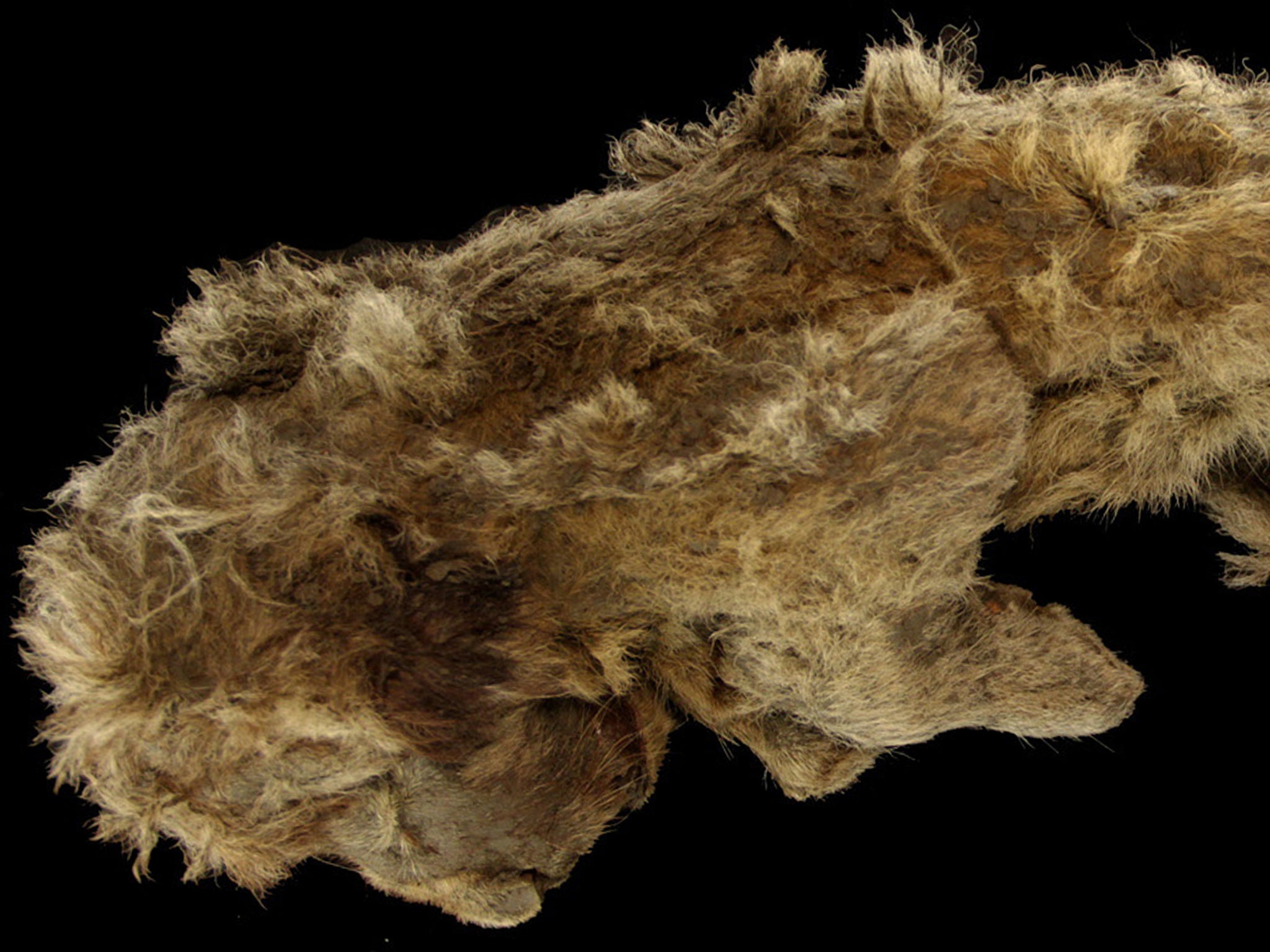28,000-year-old lion cub ‘best preserved Ice Age animal ever found’
Its fur, skeleton and internal organs are all still in tact

Your support helps us to tell the story
From reproductive rights to climate change to Big Tech, The Independent is on the ground when the story is developing. Whether it's investigating the financials of Elon Musk's pro-Trump PAC or producing our latest documentary, 'The A Word', which shines a light on the American women fighting for reproductive rights, we know how important it is to parse out the facts from the messaging.
At such a critical moment in US history, we need reporters on the ground. Your donation allows us to keep sending journalists to speak to both sides of the story.
The Independent is trusted by Americans across the entire political spectrum. And unlike many other quality news outlets, we choose not to lock Americans out of our reporting and analysis with paywalls. We believe quality journalism should be available to everyone, paid for by those who can afford it.
Your support makes all the difference.A cave lion cub discovered under Siberia’s permafrost is “arguably the best-preserved Ice Age animal ever found,” scientists have said.
The extinct big cat, named Sparta, is estimated to have lived 28,000 years ago.
But its body has been so well protected against deterioration that traces of its mother’s milk may be identifiable in its stomach, according to the Centre for Paleogenetics in Stockholm, Sweden. Its fur, skeleton and internal organs are all still present.
The female – who was just one or two months old when she died – was found close to the Semyuelyakh River in Russia’s Yakutia region in 2018 by two mammoth tusk collectors.
But details of her astonishing condition have only been revealed this week following a major study by scientists from France, Japan, Russia, and Sweden now published in the Quaternary journal.
The find was made just 15 metres from where another cub, called Boris, had been discovered the previous year, the report states.
While scientists initially suspected the two were from the same litter, radiocarbon dating has now shown they actually lived millennia apart. Boris is thought to have pre-dated Sparta by about 15,000 years.
Valery Plotnikov, one of the study’s authors, said: “The find itself is unique. Maybe, we hope, some disintegrated parts of the mother’s milk [remain intact] because if we have that, we can understand what its mother’s diet was.”
He added that the bodies of the animals – both cave lions – had no apparent damage inflicted by predators or scavengers, suggesting they may have died in their own den under a snow or earth fall.
Similar finds in Russia’s vast Siberian region have turned up with increasing regularity over recent years.
Climate change is warming the Arctic at a faster pace than the rest of the world and has thawed the ground in some areas long locked in permafrost.
Join our commenting forum
Join thought-provoking conversations, follow other Independent readers and see their replies
17Comments